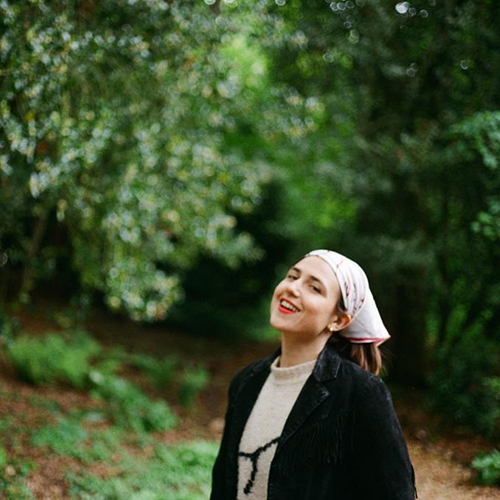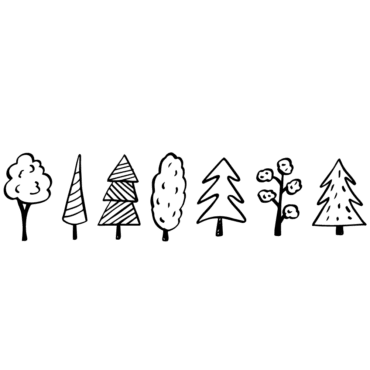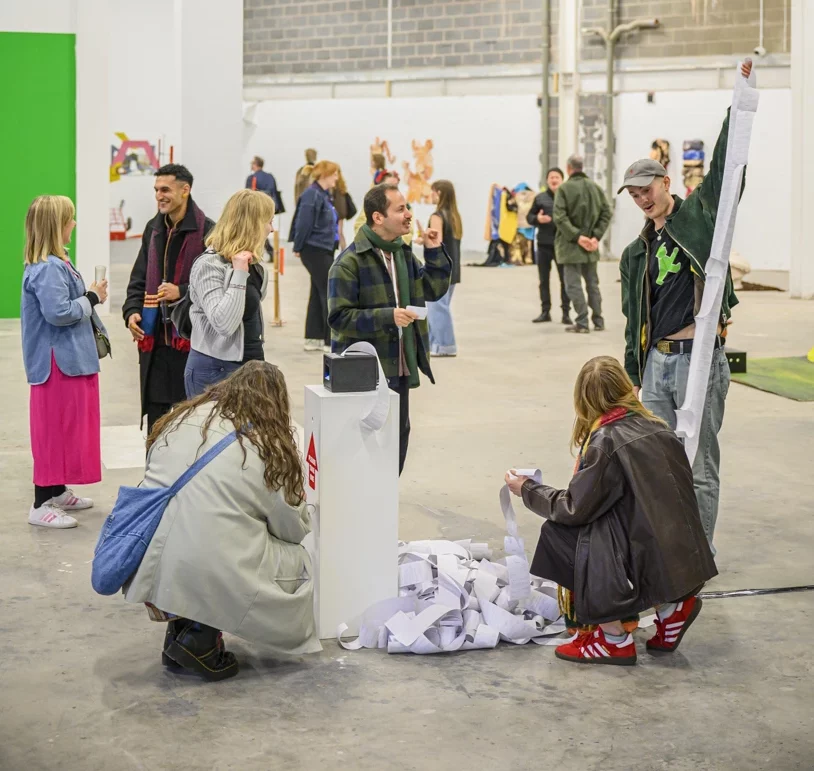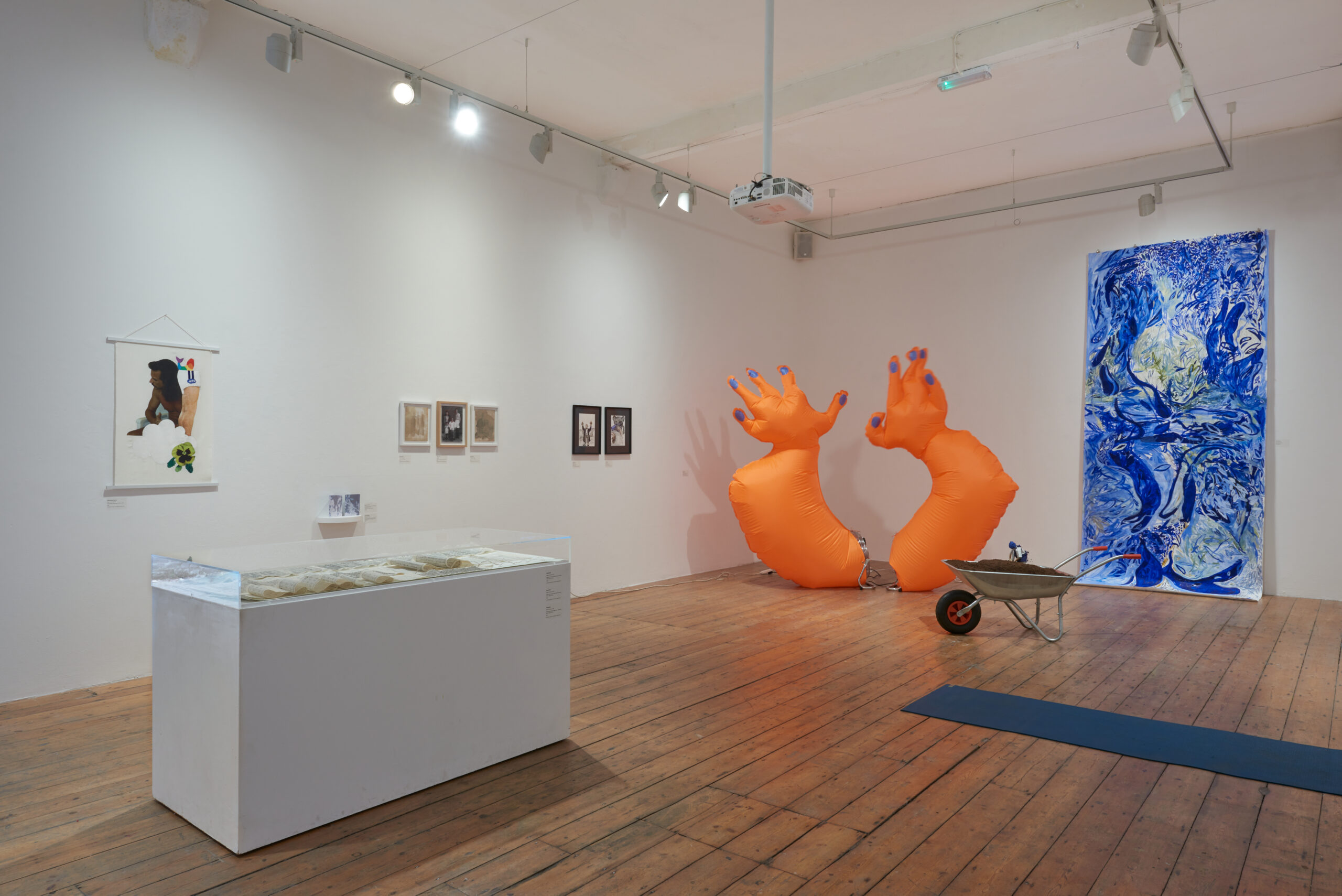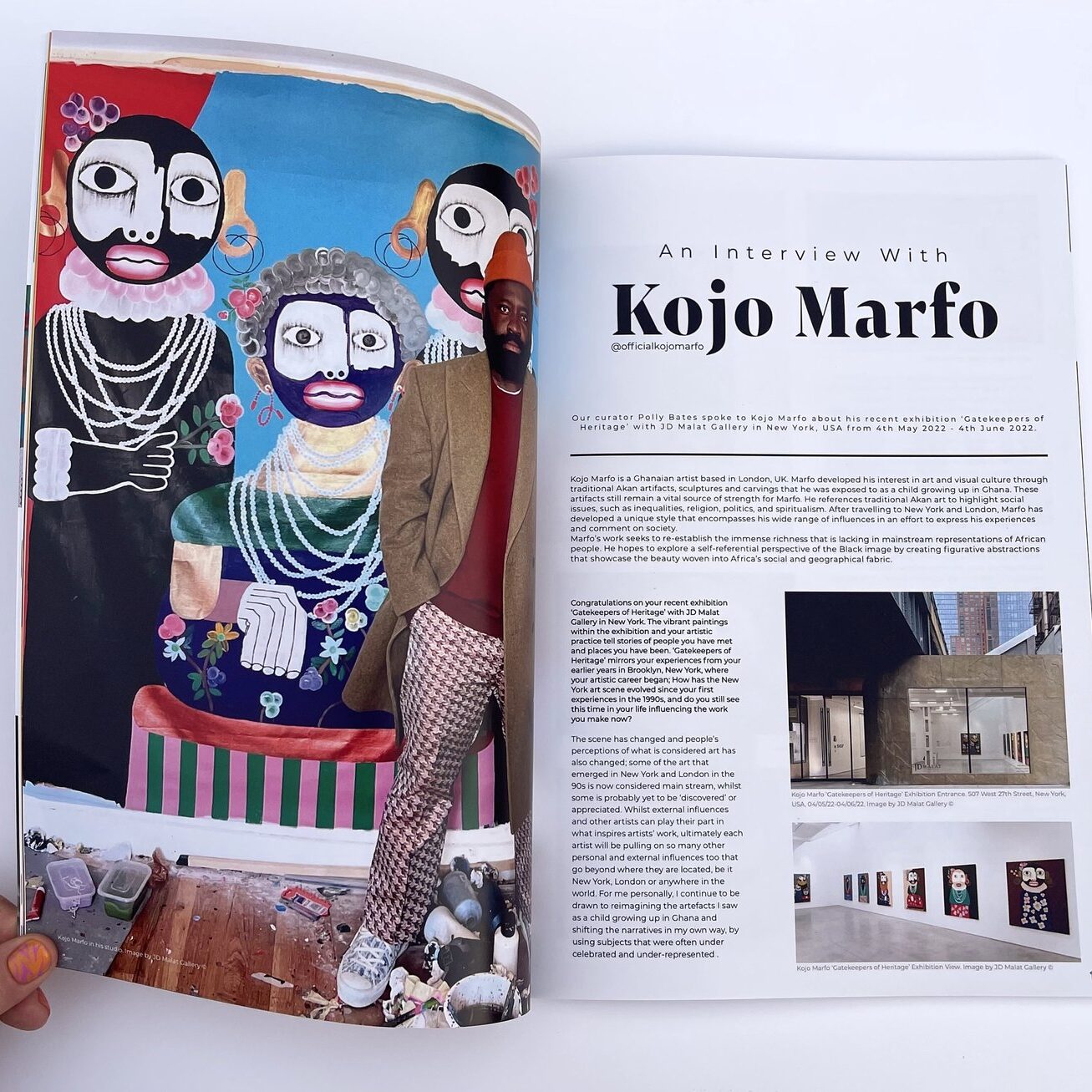As an artist, Matak is concerned with hedonism — making work that produces happiness in his audience.
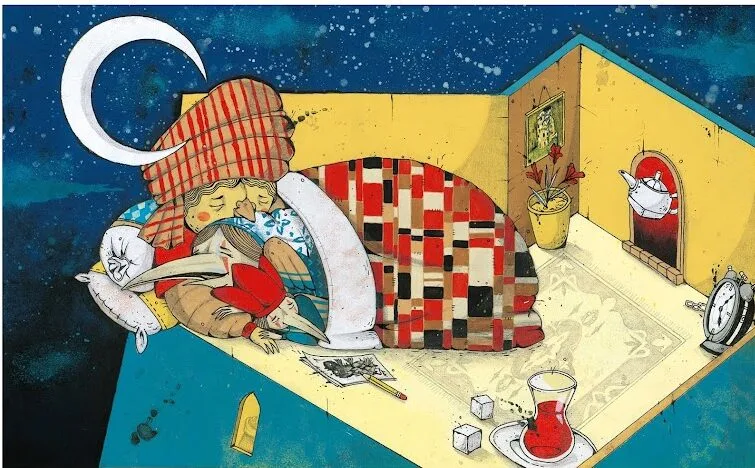
Congratulations on winning Zealous Stories: Illustration! Your project, Tippler and The Crow, is published next to Afsaneh Shaban-nejad’s re-telling of an Old Iranian folktale of the same name. When did you first hear of this tale? Does the story-line hold any particular importance to you?
My mother told me this story when I was a little boy, but that version had different characters. It’s a story about helping each other in difficult situations so, as an artist, I wanted to promote and extend that idea because I think it’s a really important message.
In the story, Auntie Rook’s house is destroyed by elemental forces. Can you tell us a bit more about what happens next in the story? How does it conclude?
Destruction by elemental forces is important because people in Northern Khoraasaan (the area of Iran where this tale is from) have named the storms after demons and monsters. So, when the storm destroys her house, Auntie Rook and her child take refuge in the house of Machoocheh (Tippler), and then it becomes clear that they want to settle there.
You’ve used other textual sources, such as J.R.R. Tolkien’s The Silmarillion, as the starting place for your illustrations. What do you think illustrations can bring to the text of a story?
For me, Tolkien is one of the most descriptive and detailed writers — this makes his stories very vivid and imaginable. I use stories as inspiration because it provides me with so many fantastic details. I feel my illustrations can make the stores richer by adding more visible elements and dimensions.
The colour palette of Tippler and The Crow seems important — it’s predominantly yellow, red, blue and grey — do these colours have any significance to you or the story?
I really love this colour palette — it’s one of my favourite colour combinations — but the most important reason for using this colour palette was because of its significance in the textile culture of Northern Khoraasaan. The herbal colours used in their textiles, the base of rugs and scarfs which I used in my illustrations, are most common among their colour palettes there.
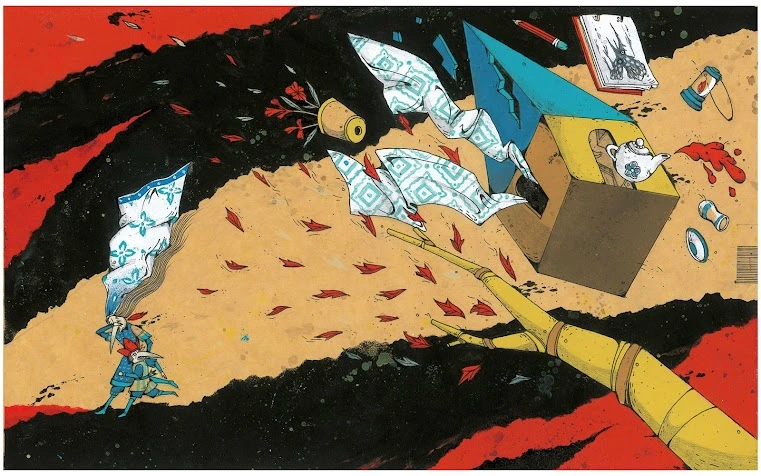
You design tattoos as well as illustrations for books and you’re an NFT artist, an art market based on digital tokens. When did you start drawing?
I started drawing and painting early in my childhood because I was an energetic boy and almost always had my sketchbook and pencils with me. I’m new to the NFT domain but I really like it. I think that more artists should enter into it since there are not many real artworks there so it should be improved in this case.
Which of your projects has been most important in developing your style?
I would say that Tippler and The Crow was the most impactful project to my career so far because of the amount of research and study I put into the pre-production. This project forced me to be more accurate and knowledgeable about the cultural history of this area — especially the visual data and inspiration that can be driven from the textiles and clothes styles of Northern Khoraasaan. I also researched other regions in Iran and their different styles: a lost point in today’s lifestyle.
Do you have any favourite illustrators or illustrations? Are there any artists who have inspired you?
My influences span everywhere and everyone. There are classical artists who influence me like Pieter Bruegel the Elder and Hieronymus Bosch; very early in my illustration career, I was inspired by Gabriel Pacheco, a contemporary illustrator born in Mexico City and based in Como, Italy. But the most respected and inspiring artist for me is Leonardo da Vinci. I like the way his career was so involved in improving and serving society (like in The Last Supper) and in more intimate works (like Mona Lisa). His approach shows his concern about the art itself and not the money. Art for art’s sake was Da Vinci’s main concern.
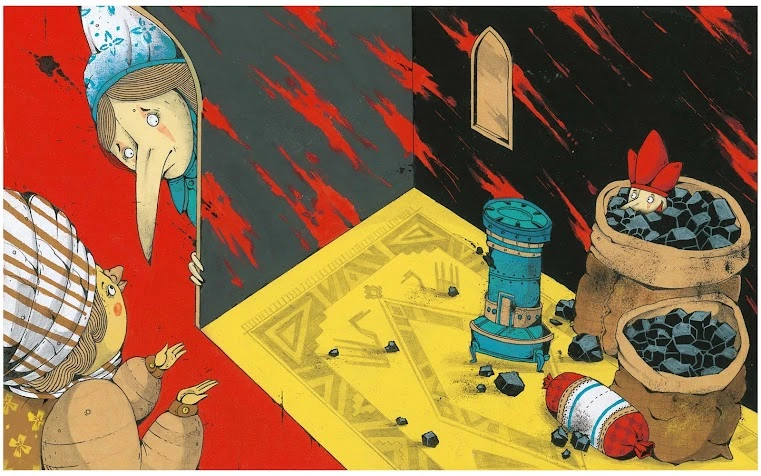
What drives your work? Do you have any aspirations for the future?
Real art does not need any motivation. Its duty is to create good feelings. Yes, naturally every person has his/her ambition and wants to present the works in a better situation — but in today’s world situation it’s going to be more difficult. This is especially true here in Iran due to political challenges and conflicts. Unfortunately, these circumstances affect the lives of ordinary people the most so their ambitions eventually shrink.
Can you tell us a bit more about your process? Do you use any technology when illustrating?
I do use technology sometimes. One of my digital paintings, 40 United Ghouls, was selected for the Cheltenham Illustration Award this year. Having said that, I’m more and more against the use of technology in any art creation by principle. I believe it will cause a loss of authenticity to the art and eventually the same loss to the artist
Are you working on anything exciting at the moment?
I’m working on a new illustration project called Sun of the Sea, Sun of the Jungle, with the children’s publishing company Tuti’s Books, the same people who I worked with to realise Tippler and The Crow. It’s about the misunderstandings that happen between people who live by the sea or in the jungle about the place where sunrise and sunset happen. It’s going to be completed soon and it will be my next submission on Zealous!
Share
Authors
